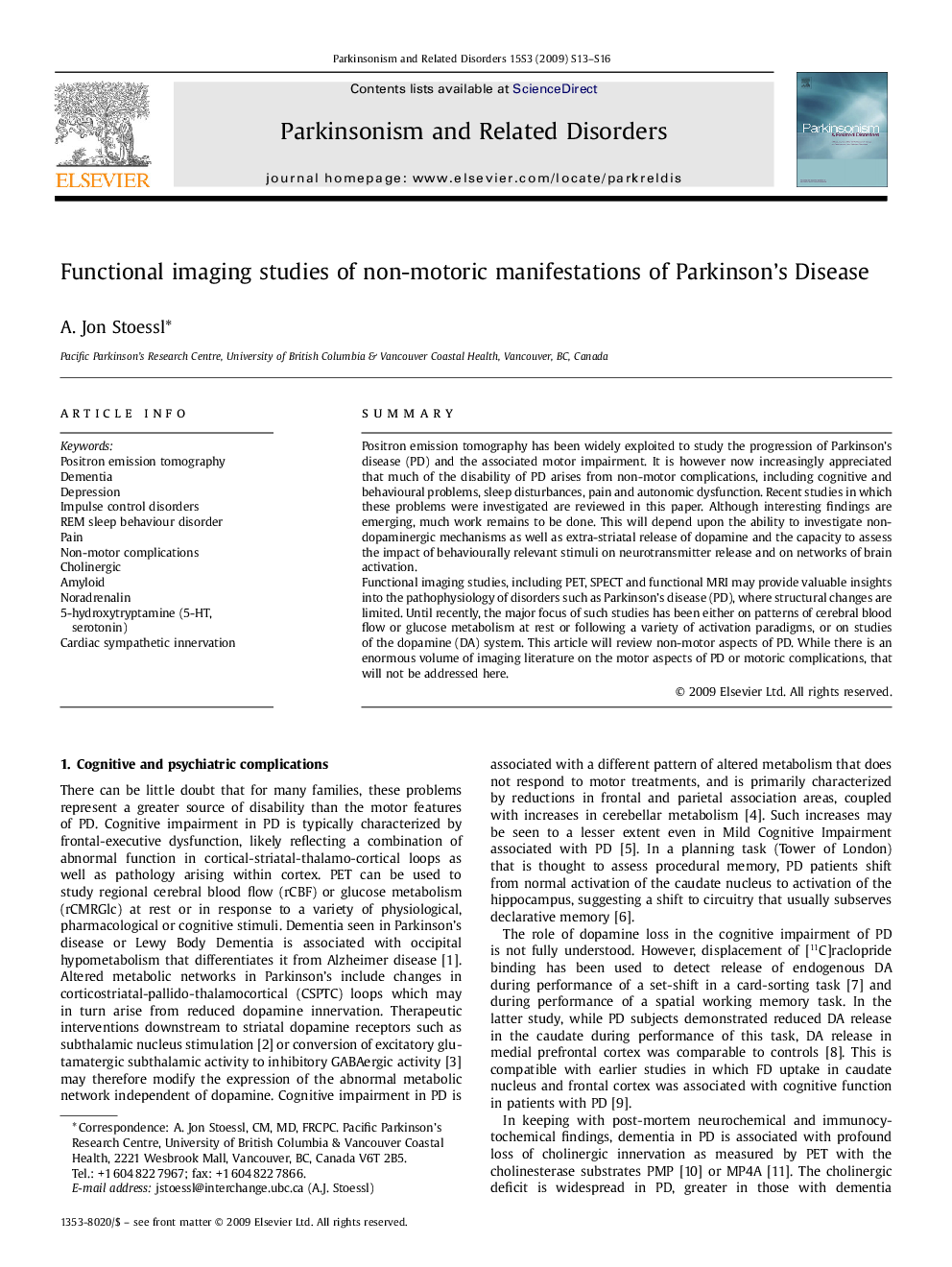| Article ID | Journal | Published Year | Pages | File Type |
|---|---|---|---|---|
| 1922025 | Parkinsonism & Related Disorders | 2009 | 4 Pages |
SummaryPositron emission tomography has been widely exploited to study the progression of Parkinson's disease (PD) and the associated motor impairment. It is however now increasingly appreciated that much of the disability of PD arises from non-motor complications, including cognitive and behavioural problems, sleep disturbances, pain and autonomic dysfunction. Recent studies in which these problems were investigated are reviewed in this paper. Although interesting findings are emerging, much work remains to be done. This will depend upon the ability to investigate non dopaminergic mechanisms as well as extra-striatal release of dopamine and the capacity to assess the impact of behaviourally relevant stimuli on neurotransmitter release and on networks of brain activation.Functional imaging studies, including PET, SPECT and functional MRI may provide valuable insights into the pathophysiology of disorders such as Parkinson's disease (PD), where structural changes are limited. Until recently, the major focus of such studies has been either on patterns of cerebral blood flow or glucose metabolism at rest or following a variety of activation paradigms, or on studies of the dopamine (DA) system. This article will review non-motor aspects of PD. While there is an enormous volume of imaging literature on the motor aspects of PD or motoric complications, that will not be addressed here.
